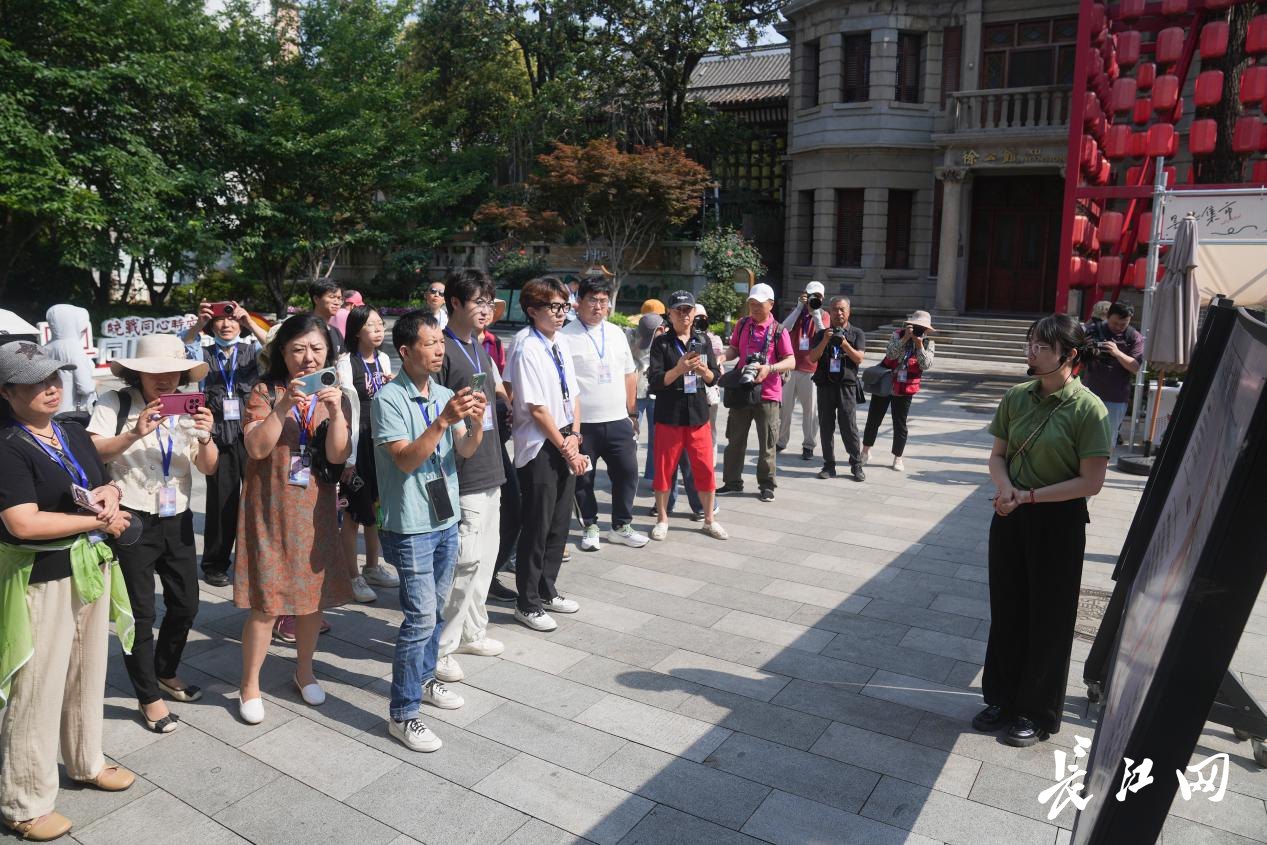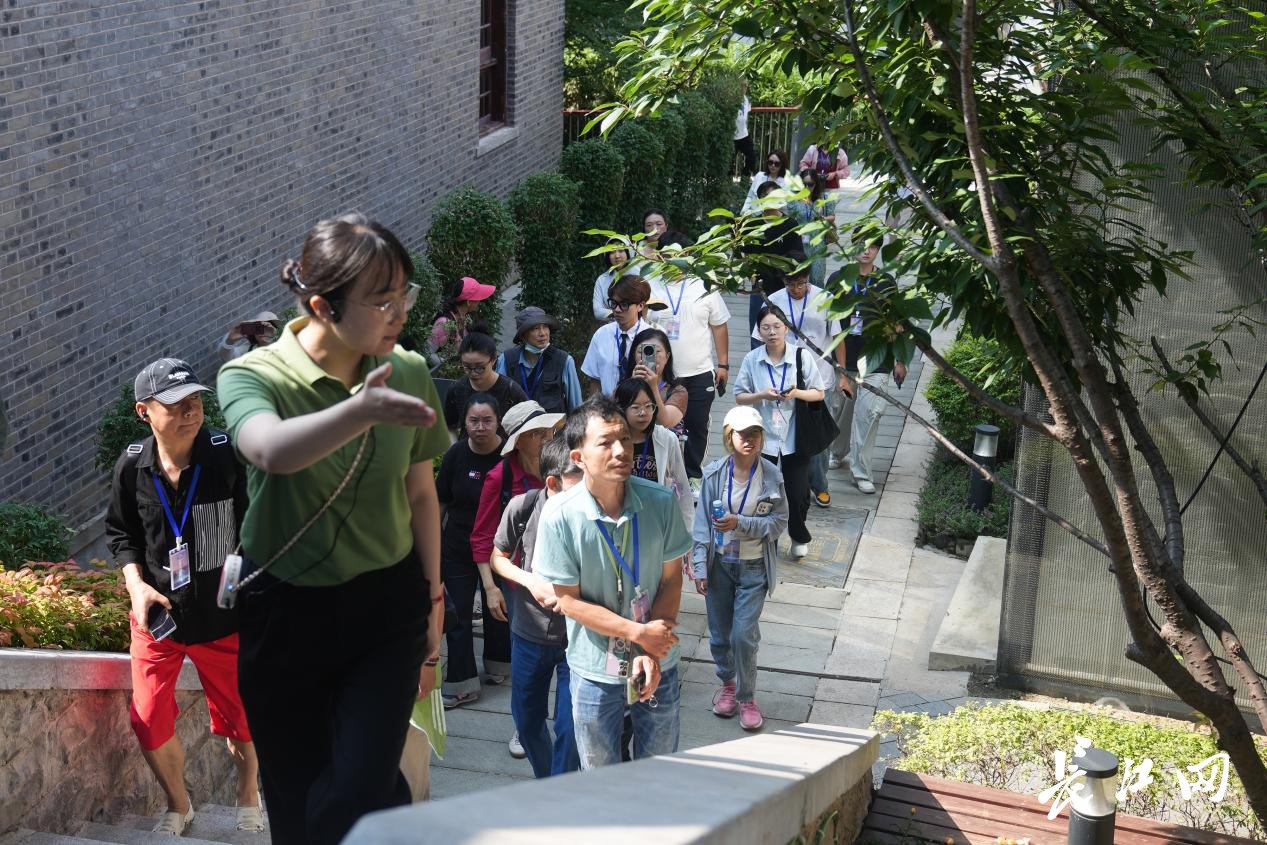
On May 29, a series of educational and promotional activities titled «Strengthening Support, Being a Good Leader» took place in Wuchang District. The city observation team, composed of history experts, university students, photographers, community workers, and local residents, visited the Wuhan City History Museum, the Wuchang Ancient City Planning and Exhibition Hall, and the special streets of Xinghualin and Douliyi, exploring Wuhan’s cultural heritage and innovative practices while experiencing the cultural impact of urban development.

Blending Tradition and Modernity: Integrating Culture, Tourism, and Commerce
On a clear summer day, the observation team toured Xinghualin Square, the ancient city wall of Wuchang, the Wuhan History Museum, Xinghualin Fusion Park, and the main entrance of Hubei University of Chinese Medicine. They then visited Douliyi Special Street, located at the head of the Yangtze River Bridge in Wuchang, starting from Hanyangmen Garden and exploring the first phase of Douliyi before concluding at the Wuchang Ancient City Planning and Exhibition Hall.

The city observation team visited the Xinghualin Historical and Cultural Street.
«Standing on the ancient city wall of Wuchang, one student shared her impressions: ‘The preservation of these buildings is remarkable! When friends visit Wuhan, I’ll definitely recommend staying in Yingwuzhou. This street blends modern architecture, bookstores, and the charm of old Wuhan.’ After visiting the Wuchang History Museum, another student expressed his thoughts: ‘I’ve visited Yingwuzhou several times, usually for cultural shops. Joining this observation team and hearing professional explanations helped me understand Wuchang’s long history. The museum’s theme, ‘Prosperity Through Martial Arts, Strength Through Change,’ left a deep impression!'»
«Yingwuzhou is an ancient street steeped in 600 years of history, dating back to the Ming Dynasty’s Hongwu era. It is regarded as the ‘root of Wuchang’s urban culture.’ Published works include ‘Zhang Zhidong in Wuchang,’ ‘The Historical Chronicle of Yingwuzhou,’ and ‘The Century-Old Grain Road.’

A representative introduced Wuchang District, highlighting Yingwuzhou and Doujiaying as symbols of the ancient city. From a Three Kingdoms-era military fort to a Tang-Song dynasty metropolis, a Ming-Qing unification hub, and now a blend of tradition and modernity, Wuchang holds an irreplaceable place in Wuhan’s cultural and historical landscape.
He noted: «Wuchang boasts unique resources like the ‘First Tower of a Thousand Rivers and Mountains’ and the ‘First Yangtze River Bridge.’ It has 111 immovable cultural relics, 82 intangible heritage items, and 16 national and non-national museums, solidifying its status as Wuhan’s cultural core.»
Cultural and Creative Industries Thrive with Strong Local Atmosphere
Wuhan City History Museum
Wuhan City History Museum
Wuchang Ancient City Planning and Exhibition Hall
Xinghualin
Douliyi
ancient city wall of Wuchang
Xinghualin Fusion Park
Hubei University of Chinese Medicine
Hanyangmen Garden
Похожие новости
New discoveries in lunar samples! Chang’e-6 reveals evolutionary clues from the moon’s far side

The Regional Comprehensive Science and Technology Innovation Level Index in Hubei Ranks First in Central China.

«Book Fragrance of the Yangtze River» Reading Week and Wuhan Book Fair opens, attracting numerous readers with over 70,000 types of quality books.

В Китае созданы благоприятные условия для инноваций и реализации предпринимательских амбиций молодёжи.

